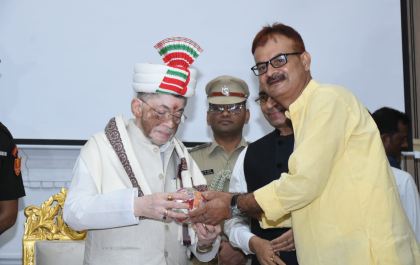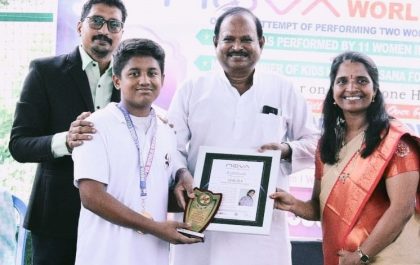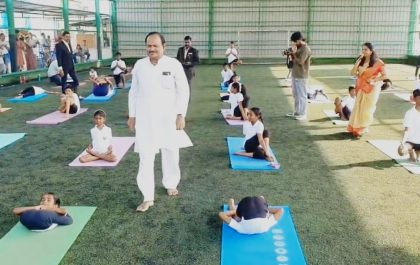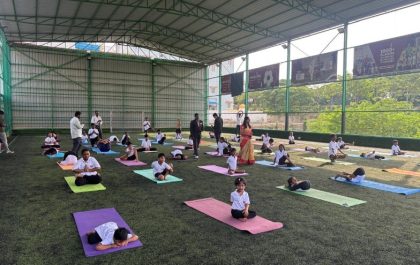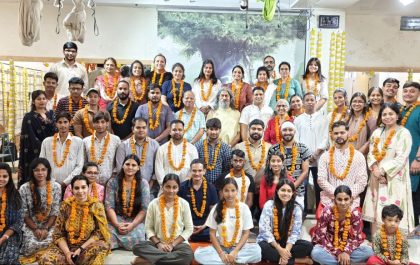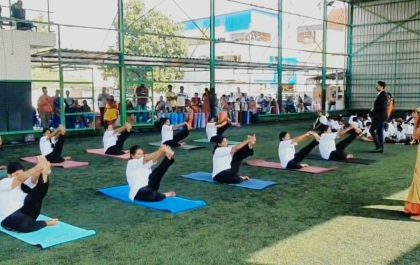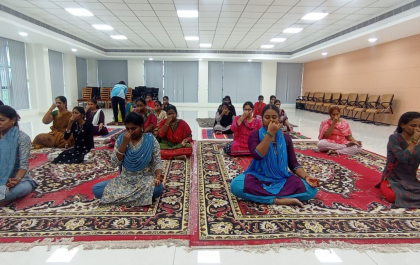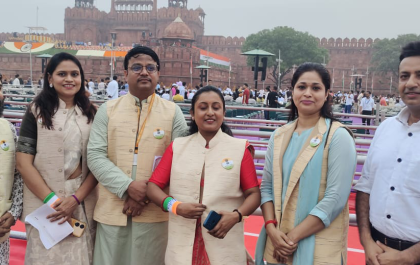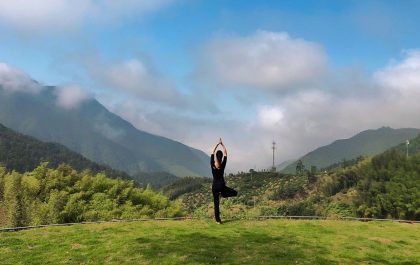Research is extremely important to support different approaches to health care. In the recent past, Yoga has been gaining lot of attention as Yoga Institutes, reseachers, scholars have started offering substantive clinical research evidence. In this issue, Indian Yoga Association brings to you the Research Papers published by our Member Institutes and other Institutes or individuals on the Oxygen Consumption during Pranayama and the benefits
Kaivalyadhama
CO2 Elimination in Pranayama
Author: Swami Kuvalayananda
Published In: Yoga Mimamsa 4(2), 95-120
Published On: 1930
Abstract: CO2 % in expired air had a direct relationship with the time of one round of Pranayama kept at 14, 21, 28, 35 and 49 seconds in various ratios from 1:1 to 1:6 for Puraka Rechaka and 1:1:2 to 1:4:2 for Puraka-Kumbhaka-Rechaka
CO2 volume, as calculated per unit time proved to be maximum during pranayama with one round for 14 seconds and minimum when one round was for 49 seconds having ratio of 1:4:2 for Puraka-Kumbhaka-Rechaka indicating either CO2 retention or decrease in CO2 production. Inclusion of Kumbhaka was seen to reduce CO2 elimination.
International Centre for Yoga Education and Research (ICYER)
Cardiorespiratory changes during savitri pranayama and shavasana
Author: Madan Mohan, UC.Rai, V.Balavittal, DP Thombre and Swami Gitananda
O2 Absorption and CO2 Elimination in Pranayama
Author: Swami Kuvalayananda
Published In: The Yoga Review, Vol.III, No.1
Published On: 1983
Abstract:- The present study was conducted in trained (n=7) and untrained (n=7) volunteers to determine the effect of savitri pranayam and shavasan on O2 consumption, heart rate and blood pressure. In trained subjects we found a consistent and significant (p<0.01) reduction in O2 consumption within a few minutes of starting savitri pranayama. During shavasan, there was significant reduction in O2 consumption (p<0.05), heart rate (p<0.01) and diastolic blood pressure (p<0.05). In untrained subjects, the changes in above mentioned parameters were statistically insignificant.
Patanjali Yogpeeth
Oxygen consumption during pranayamic type of very slow-rate breathing
Authors: Telles S, Desiraju T
Published In: The Indian Journal of Medical Research, 94:357-363
Published On: October 1991
Abstract: To determine whether the yogic Ujjayi pranayamic type of breathing that involves sensory awareness and consciously controlled, extremely slow-rate breathing including at least a period of end-inspiration breath holding in each respiratory cycle would alter oxygen consumption or not, ten males with long standing experience in pranayama, and volunteering to participate in the laboratory study were assessed. These subjects aged 28-59 yr, had normal health appropriate to their age. Since kumbhak (timed breath holding) is considered as an important phase of the respiratory cycle in the pranayama, they were categorised into two groups of five each, one group practising the short kumbhak varieties of pranayama, and the other the long kumbhak varieties of pranayama. The duration of kumbhak phase was on an average 22.2 percent of the respiratory cycle in the short kumbhak group, and 50.4 per cent in the long kumbhak group. The oxygen consumption was measured in test sessions using the closed circuit method of breathing oxygen through the Benedict-Roth spirometer. Each subject was tested in several repeat sessions. Values of oxygen consumption of the period of pranayamic breathing, and of post-pranayamic breathing period, were compared to control value of oxygen consumption of the prepranayamic breathing period of each test session. The results revealed that the short kumbhak pranayamic breathing caused a statistically significant increase (52%) in the oxygen consumption (and metabolic rate) compared to the pre-pranayamic base-line period of breathing. In contrast to the above, the long kumbhak pranayamic breathing caused a statistically significant lowering (19% of the oxygen consumption (and metabolic rate).(ABSTRACT TRUNCATED AT 250 WORDS)
Swami Vivekananda Yoga Anusandhana Samsthana (SVYASA)
A review of the scientific studies on cyclic meditation
Author: Pailoor Subramanya and Shirley Telles
Published In: International Journal of Yoga
Published On: Jul-Dec, 2009
Abstract: Yoga is an ancient science, originating in India, which has components of physical activity, instructed relaxation and interoception. Yoga includes diverse practices, such as physical postures (asanas), regulated breathing (pranayama), meditation and lectures on philosophical aspects of yoga. Meditation is the seventh of eight steps prescribed to reach an ultimate stage of spiritual emancipation (Patanjali, circa 900 B.C.).[4] While many practitioners do learn meditation directly, others find it easier to first pass through the other stages – learn yoga postures (asanas) and regulated breathing (pranayamas). It is postulated that when a novïce attempts to meditate directly, there could be two responses based on the quality of the mind viz., (i) a rajasic – active (personality) mind would be restless all through the session and (ii) a tamasic – a mind with inertia could fall asleep. This problem of the mind is addressed in the Mandukya Upanishad. Based on this a technique of ‘moving meditation’, which combines the practice of yoga postures with guided meditation was evolved, called cyclic meditation (CM), by H.R. Nagendra, Ph.D., which has its’ origin in an ancient Indian text, Mandukya Upanishad.[5] It is interesting to note that CM does induce a quiet state of mind, which is compatible with the description of meditation (dhyana or effortless expansion), according to Patanjali. The description states: ‘Tatra pratyayaikatanata dhyanam’ (Patanjali’s Yoga Sutras, Chapter 3: Verse 2). This means that the uninterrupted flow of the mind towards the object chosen for meditation is dhyana.[4] Indeed, all meditations, irrespective of the strategies involved are believed to help reach this state. There are several strategies in meditation which include breath awareness, awareness of internal sensations, directing the attention to a mantra or a koan, and keeping the eyes open with the gaze fixed on the object of meditation.
